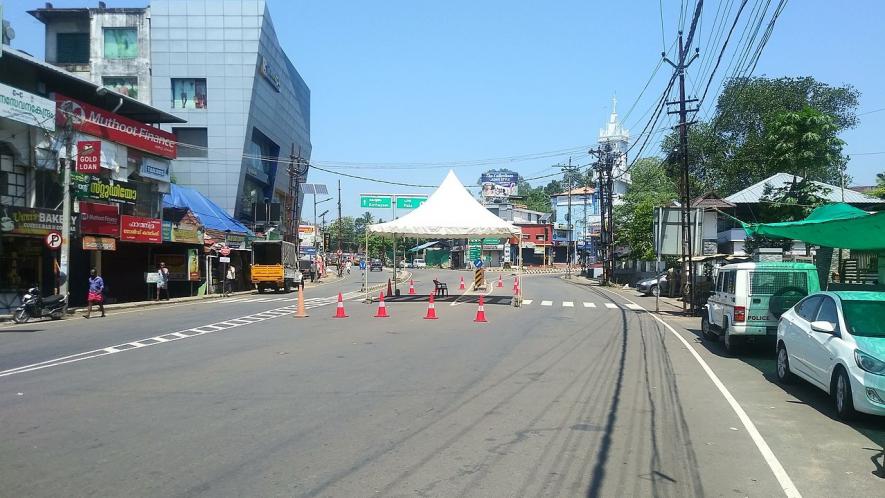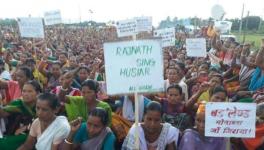Looks Like India Flattened All the Wrong Curves

On 22 March, Prime Minister Narendra Modi instigated the cringe-worthy farce of the “janata curfew”. Two days later, a lockdown was announced at four hours’ notice. | Image Courtesy: Wikipedia
The World Bank has joined a roomful of institutions, and individuals, which have made dire economic predictions for the ongoing financial year. According to it, the global economy will shrink by 5.2%, while India’s GDP will fall by 3.2%.
Obviously, no one in particular is to blame for the emergence and spread of Covid-19 and, similarly, no one disputes that the Indian government would have had to lock down the country at some point for some duration and to some extent. The devil, however, is in the detail. To give away my conclusion at the beginning, the Modi regime botched the exercise so completely that it almost seems maliciously intentional. It probably isn’t, but it certainly is criminally wilful.
Industrialist Rajiv Bajaj’s observation that the government flattened the wrong curve may sound uncharitable, but it isn’t wildly off track.
Let me review the Indian government’s actions against the Covid-19 timeline since the beginning of the year to get a rough sense of the Modi regime’s monumental, and actionable, incompetence. At the very beginning, the regime appeared to have been enveloped in a somnolent haze—as far as the Covid-19 outbreak was concerned. It wasn’t really in a stupor actually, as we shall see, it was just distracted by more pressing concerns.
We can begin with the day the World Health Organization (WHO) declared the outbreak, which had started to rapidly spread within China, a ‘Public Health Emergency of International Concern’. That happened on 30 January. Though the Covid-19 outbreak was designated a pandemic by the WHO only on 11 March, on 24 February, WHO Director-General Tedros Adhanom Ghebreyesus had stressed that the world should focus on containment, “while doing everything [it] can to prepare for a potential pandemic”. In other words, by then the alert had been well sounded.
Around the world, though many things remained unclear, it was abundantly clear that the new virus was making waves. China was being overwhelmed in January. On 23 January, Wuhan and other cities in Hubei province were locked down. Covid-19 had spread outside China, in the region, by early February. On 23 February, South Korea had announced the highest level of alert.
On 28 February, WHO raised the global risk of the spread of Covid-19 from “high” to “very high”. By then there were 4,691 cases of Covid-19—including 67 deaths—outside of China, in 51 countries. India had recorded its first Covid-19 case on 31 January. Though the progress of the disease by late February had been minimal, the situation had become serious enough for many people to be checked and isolated, often in batches. Especially, people arriving from outside the country.
The reason for constructing this timeline is to establish, yet again, that the Covid-19 situation was getting grimmer through February and by the time March arrived no one should have been left with much legroom for complacency. The Modi regime, however, remained exactly that. It seemed to have been jerked out of a deep slumber only in the middle of March when on 19 March it suspended incoming international arrivals with effect from 22 March for a week (later extended). It had closed border check posts from 15 March. Then, on 22 March, Prime Minister Narendra Modi instigated the cringe-worthy farce of the “janata curfew”. Two days later, a lockdown was announced at four hours’ notice. It lasted, in most of its essentials, till 17 May—almost eight weeks—before it began to be relaxed.
The first point to note is that through February and the first half of March, the government seemed to be oblivious. It barely took note of the fact that a global pandemic of obvious virulence had broken out, breached the country’s defences and had begun to spread. There were a number of proximate reasons. The ruling party had been hammered in the Delhi elections, following which its cadres had got busy with the violence in Delhi and creating mayhem, after which, willy-nilly, the Centre had to “contain” that situation. On top of that, Prime Minister Narendra Modi had been busy organising a self-indulgent show big enough to satisfy two super-inflated egos to impress visiting United States President Donald Trump. Barely had the dust settled, the Bharatiya Janata Party (BJP) had to devote its energies to unseating the Madhya Pradesh government.
Given these distractions, it’s not surprising that Modi and his regime were too occupied to give the matter of the pandemic much thought, which certainly does explain why the lockdown was imposed without any planning in the kind of grandiloquent style that is Modi’s trademark. There are two principal points to be made here.
First, there was no reason for the imposition of a blanket lockdown of exactly the same severity across a country of continental magnitude. When China was struggling with what was then an epidemic, with no precedent to fall back on, it hadn’t done so, though in the midst of the panic, it would have been understandable. It imposed lockdowns of graded severity in different places. Regions that had not been affected were barely locked down at all. We shall return to this point.
Second, if Modi and his acolytes had just taken a day or two off from their enormously important distractions to do some thinking, for a change, they might just have realised that a lot of people—most importantly migrant labourers—would be stuck in places of work without any work or earnings. It might have further dawned on them that it might have been a half-way decent idea to give these people a fortnight or so to organise return trips back home. That would have saved a lot of people a lot of unnecessary hardship. But since enough has been written on that, we’ll drop it this time.
It might, however, also have occurred to the regime that, given what was happening in many other countries by then, it would be a good idea to let people go back to their homes before the infection started to spread and before the rate of spread of a virus with uncontainable transmissibility picked up pace. In other words, if people who needed to travel had done so before the lockdown was clamped, they would have spread the virus minimally.
Instead, as we know, the geniuses who run the government decided to let the migrant labourers, and others, start returning to their homes only in May (in packed trains), by which time, despite the lockdown, Covid-19 was spreading fast. In the last phase of the lockdown, this meant that people returning to their homes started spreading the virus further and faster, often to areas previously uninfected. By the time the lockdown began to be eased, thus, its purpose had been completely stymied.
Now, with the lockdown all but lifted, we can look forward to a phase of a high-velocity spread of Covid-19, which can hardly be prevented by fresh rounds of lockdowns. It is in this context, that Bajaj’s comment is significant. Modi’s lockdown has indeed flattened the GDP curve, leaving space for the pandemic curve to climb.
Had the regime allowed people to move back to wherever they wanted or needed to be, the infections may not have taken off steeply from the middle of last month. But that’s only a part of it. If the Modi government had tackled the problem in a more federal spirit, it is possible that the GDP curve wouldn’t have been flattened as badly as it has been. In other words, had it started consulting with chief ministers from, say, the beginning of March about a possible lockdown sometime in the course of the month, it might have been possible to start mapping the spread of the disease and putting in place necessary systems from then.
That would have allowed the governments to impose coordinated, graded and staggered measures in accordance with need and applicability. If proper systems had been put in place, these several lockdowns could have been calibrated. The severity of proscriptions could have varied dynamically according to necessity—which includes inter-regional movements of people and commodities.
For this to happen, the Modi regime would have had to work on the federal principle. Decisions should have been taken by the state governments on intra-state questions in consultation with the Centre, while the latter could have had the important role of coordination and deciding on issues that affected more than one state. It could also have monitored the situation.
Unfortunately, this regime fancies itself as being beyond established norms. So it laid down the rules, without regard to situational complexities, and left it to the state governments to get their hands dirty and do the real work—without even giving them federally mandated funds to meet a literally unprecedented public-health crisis. Once in a while, of course, it sent out crack squads, not to assist, but to flex muscles.
In the process, it has achieved its probable objective: creating situations in which it can put political antagonists at a disadvantage. But it’s not the adversarial state governments who have lost the most. Those who have lost the most are the people, common and uncommon, but in the most unnecessarily merciless and destructive way, the poor and those least able to cope.
The recovery will be slow for everyone as the projected GDP figures suggest. Months at least, if not years, certainly not weeks. It is to be hoped that when their time arrives, the poor, whose mandate Modi has so unconscionably betrayed, will remember this and clamp on the BJP the harshest possible of lockdowns.
The author is a freelance journalist and researcher. The views are personal.
Get the latest reports & analysis with people's perspective on Protests, movements & deep analytical videos, discussions of the current affairs in your Telegram app. Subscribe to NewsClick's Telegram channel & get Real-Time updates on stories, as they get published on our website.























